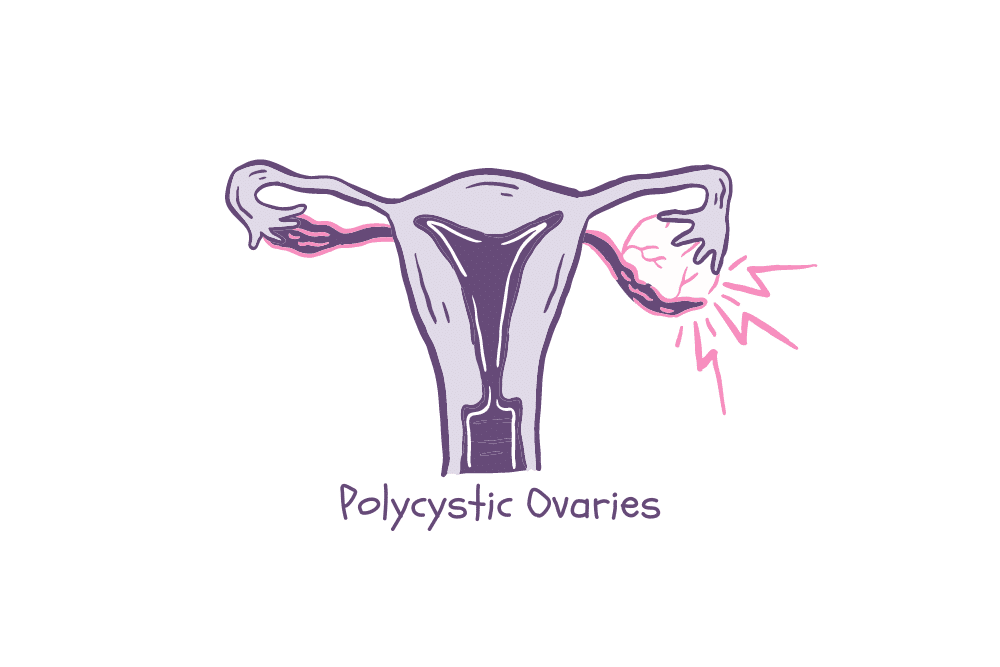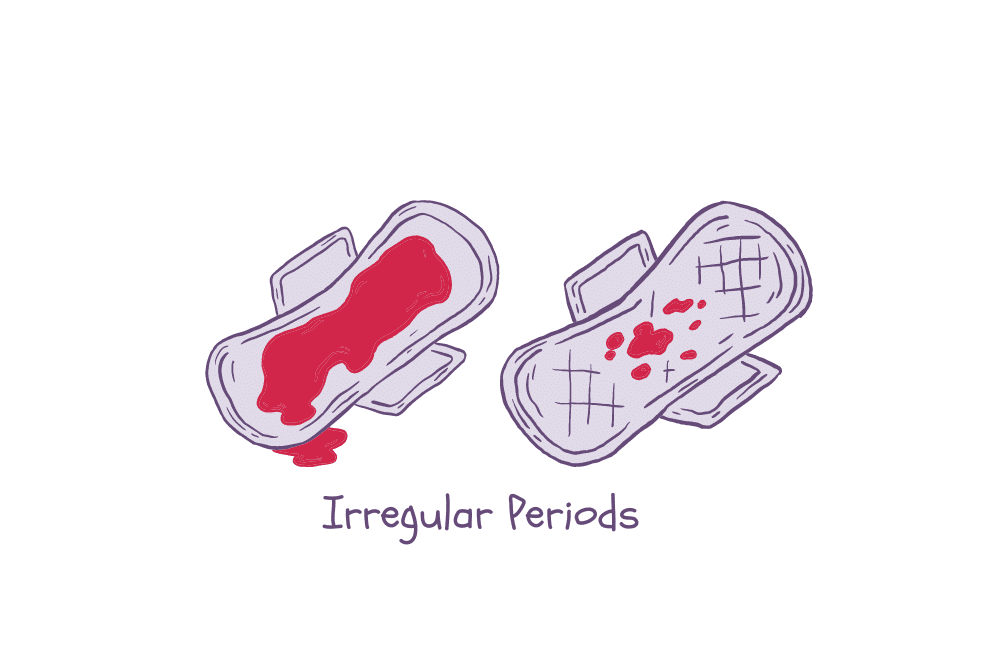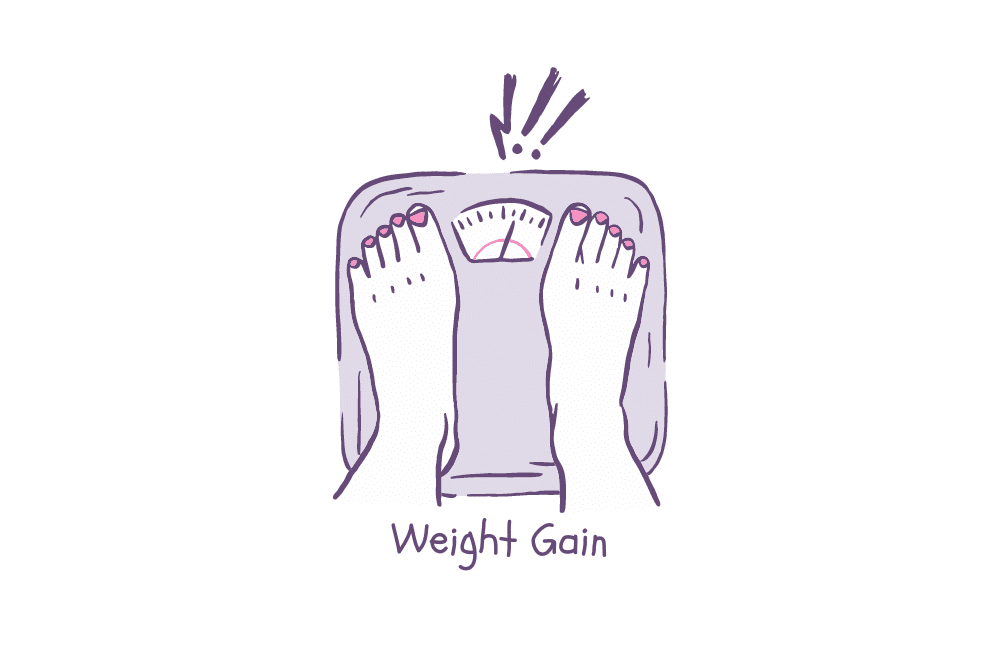Polycystic ovary syndrome (PCOS) is a complex hormonal condition that affects countless women worldwide. However, the journey to a PCOS diagnosis can be lengthy and challenging, leaving many in the dark about their health.
In this comprehensive guide, we demystify the PCOS diagnosis process, shedding light on the complexities and hurdles that often accompany it. Join us as we explore PCOS, the early signs of PCOS to look out for, and what tests to expect for PCOS diagnosis.
Recognising PCOS: Signs and Symptoms to Watch For
Polycystic ovary syndrome is a multifaceted condition that presents with a range of subtle yet telling signs and symptoms. Recognising PCOS symptoms early is essential for timely diagnosis and effective management.
Irregular Periods
One of the hallmark signs of PCOS is irregular menstrual periods. If you notice that your periods are consistently irregular, with unpredictable timing and varying flow, it could indicate PCOS. Tracking your menstrual cycle and discussing these changes with a healthcare professional can help in the diagnostic process.
Excess Hair Growth (Hirsutism)
Excessive hair growth, particularly in areas where men typically grow hair (such as the face, chest, and back), is a common symptom of PCOS. This condition, known as hirsutism, is often a result of elevated male hormones (androgens). If you’re experiencing unwanted body hair growth, consult a healthcare specialist for diagnosis and treatment.
Unexplained Weight Gain (PCOS Belly)
Unexplained weight gain, especially around the abdomen, is another common symptom of PCOS. PCOS weight gain can be frustrating, as it often seems resistant to diet and exercise. It is often associated with insulin resistance, a common feature of PCOS. Understanding the link between PCOS and weight gain is essential to manage PCOS symptoms effectively.
Hormonal Imbalances
PCOS can disrupt the delicate balance of reproductive hormones in the body. Irregular periods, missed periods, or prolonged menstrual cycles can indicate hormonal imbalances. Hormone levels, including those of male hormones (androgens) and follicle-stimulating hormone (FSH), may be altered in women with PCOS.
Recognising these signs and symptoms is the first step in the journey to confirm PCOS. If you suspect you may have PCOS based on these symptoms, it’s essential to seek medical advice. To confirm the diagnosis, your healthcare professional can conduct the necessary tests, including blood tests, ultrasounds, and a thorough medical history evaluation.

What Are the 4 Stages of PCOS?
The four stages of PCOS are:
Early PCOS: This stage typically involves irregular periods and hormonal imbalances.
Mild PCOS: In this stage, symptoms like excess hair growth and weight gain may become more noticeable.
Moderate PCOS: More severe symptoms and disruptions to the menstrual cycle occur at this stage.
Severe PCOS: This stage often involves substantial hormonal imbalances, insulin resistance, and significant symptoms affecting overall health.
Understanding these stages helps healthcare professionals determine the severity of PCOS and plan appropriate treatment strategies.

What Are the Three Criteria for PCOS?
Polycystic ovary syndrome can manifest differently in each individual. To diagnose PCOS, healthcare professionals typically rely on three key criteria, each shedding light on different aspects of the condition.
Irregular Menstrual Periods
Irregular menstrual periods are one of the primary symptoms of PCOS. Women living with PCOS often experience menstrual cycles that are infrequent, unpredictable, or absent altogether. This irregularity is often indicative of underlying hormonal imbalances.
Excess Androgen Hormones
PCOS is characterised by elevated levels of androgen hormones, such as testosterone. This hormonal imbalance can lead to symptoms like excess hair growth (hirsutism), hormonal acne, and even male-pattern baldness.
Polycystic Ovaries
Another characteristic of PCOS is the presence of polycystic ovaries. This condition involves the development of multiple small cysts or fluid-filled sacs on the ovaries, which can be detected through ultrasound imaging.
By considering these three criteria—irregular periods, excess androgen hormones, and polycystic ovaries—healthcare providers can make a comprehensive assessment for PCOS diagnosis. Early recognition of these criteria and their associated symptoms allows for timely intervention and management of PCOS, reducing the potential risks and improving the quality of life for those affected by this condition.

Understanding the PCOS Diagnosis Process
To confirm a PCOS diagnosis and tailor treatment plans effectively, it’s essential to understand the diagnostic process.
Medical History Assessment
The PCOS diagnosis process typically begins with a comprehensive assessment of your medical history. Your healthcare provider will ask questions about your menstrual periods, PCOS symptoms, family history, and other relevant health information. Sharing accurate details about your health is essential for an accurate diagnosis.
Physical Examination
A physical examination is the next step in diagnosing PCOS. Your healthcare professional will thoroughly examine physical symptoms such as excess hair growth, acne, and signs of hormonal imbalances. Your doctor may also check for high blood pressure and signs of diabetes.This examination helps confirm the presence of PCOS symptoms and guides further evaluation.
Blood Tests
Blood tests play a critical role in PCOS diagnosis. A blood test can measure hormone levels, including testosterone and follicle-stimulating hormone (FSH). Elevated testosterone levels and hormonal imbalances are key indicators of PCOS. Additionally, blood tests assess insulin levels and cholesterol and triglyceride levels, which are often affected in women with PCOS.
Ultrasound Imaging
An ultrasound examination of the pelvis is used to visualise the ovaries. It helps confirm the presence of polycystic ovaries, one of the diagnostic criteria for PCOS. During the ultrasound, the healthcare professional will look for the characteristic appearance of multiple small cysts or fluid-filled sacs on the ovaries.
Confirming PCOS
To receive a PCOS diagnosis, you typically need to meet at least two of the following criteria: irregular periods, excess androgen hormones, or polycystic ovaries. Your healthcare provider will assess the results of your medical history, physical examination, blood tests, and ultrasound to confirm PCOS.
Early Diagnosis
Early diagnosis of PCOS is essential for effective management and reducing long-term health risks. Once diagnosed, your healthcare professional can work with you to create a personalised treatment plan. This plan may include lifestyle changes, such as adopting a healthy diet and exercise routine to lose weight with PCOS and medication to address specific symptoms or concerns.

How Do You Know If You Have PCOS?
Polycystic ovary syndrome is a common hormonal disorder that affects many women, and recognising its presence is vital for timely diagnosis and treatment. Here are the key steps to help you determine if you might have this condition:
Recognise Common PCOS Symptoms
Start by understanding the common symptoms associated with PCOS. These include irregular menstrual periods, excessive hair growth (hirsutism), unexplained weight gain, and signs of hormonal imbalances like acne.
Consult a Healthcare Provider
If you suspect you have PCOS based on your symptoms, schedule an appointment with a healthcare provider. They will conduct a thorough assessment, beginning with a discussion of medical history.
Undergo a Physical Exam
A physical examination will be performed to assess external symptoms associated with PCOS. This may include evaluating excess hair growth, acne, and signs of hormonal imbalances.
Discuss Your Concerns
Share your concerns and symptoms with your healthcare provider. Based on your discussions, they may recommend specific tests to confirm or rule out PCOS.
Pelvic Ultrasound
In some cases, a pelvic ultrasound may be recommended. This imaging technique helps visualise the ovaries and identify the presence of polycystic ovaries.
Confirming PCOS
To receive a PCOS diagnosis, you typically need to meet at least two of the following criteria: irregular periods, excess androgen hormones, or polycystic ovaries. Your healthcare provider will assess the results of your medical history, physical examination, blood tests, and ultrasound to confirm PCOS.
If you suspect you have PCOS or are experiencing symptoms, don’t hesitate to seek medical advice. Early recognition and diagnosis are essential for managing PCOS effectively and improving overall well-being.

Treating PCOS
Treatment for PCOS focuses on addressing hormonal imbalances and related symptoms. This includes measures such as regulating hormones with contraceptives (birth control pills), managing androgen-related issues like excessive hair growth through lifestyle changes, such as diet and exercise, and occasionally using medications to improve insulin sensitivity.
For those who have had PCOS diagnosed and are aiming to conceive, fertility treatments and medications might be considered. While laser hair removal is effective in managing the cosmetic concern of hirsutism (excessive hair growth), it’s essential to remember that it is not a primary treatment for PCOS but can complement other approaches.
Although PCOS itself doesn’t directly cause endometrial cancer, it’s important to acknowledge that some women with PCOS may face an increased risk of developing endometrial cancer due to irregular menstrual cycles and heightened exposure to oestrogen. Regular check-ups with a healthcare provider are pivotal for early detection and treatment of potential health issues, including monitoring for signs of endometrial cancer.









